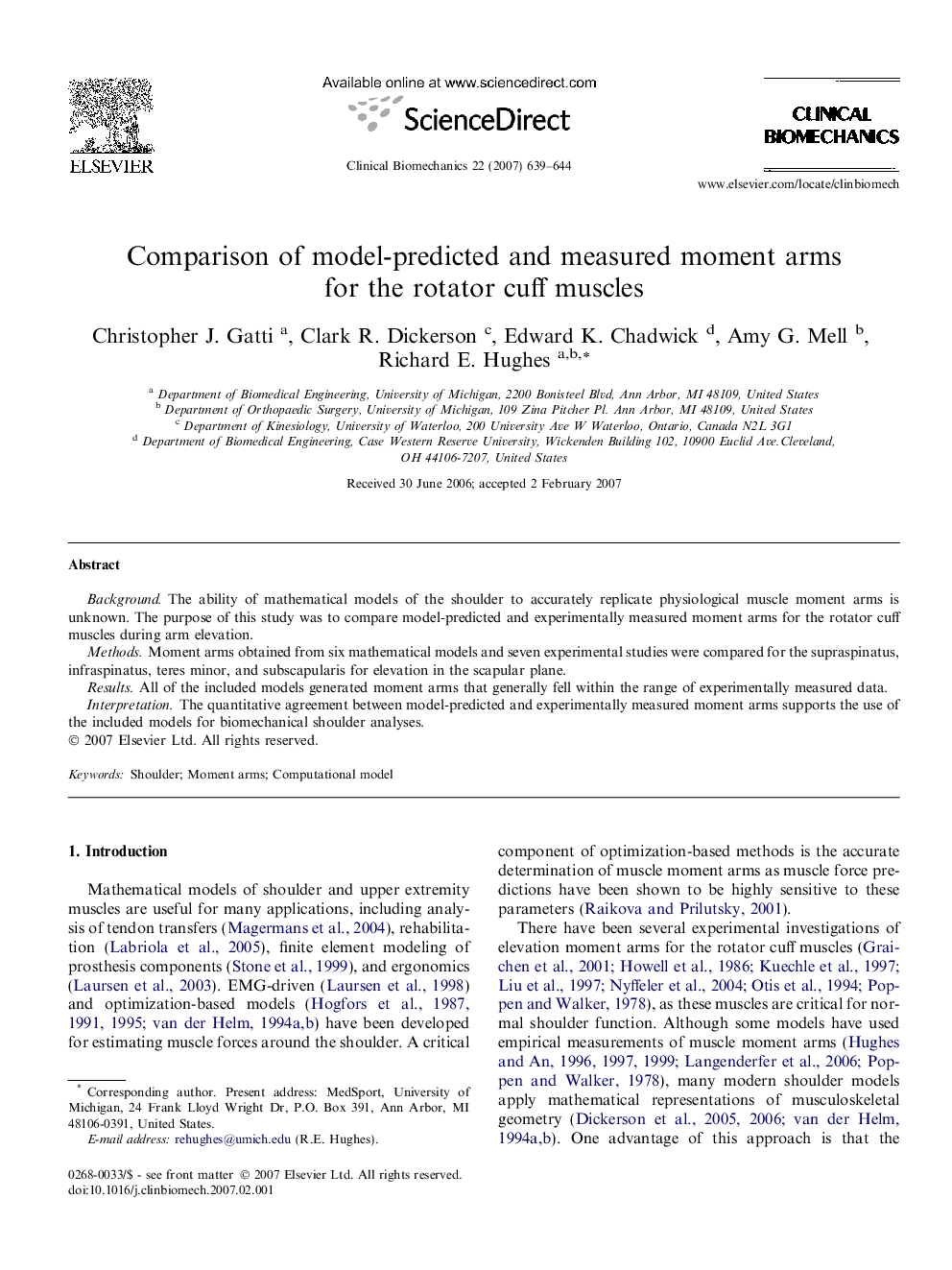| Article ID | Journal | Published Year | Pages | File Type |
|---|---|---|---|---|
| 4051628 | Clinical Biomechanics | 2007 | 6 Pages |
BackgroundThe ability of mathematical models of the shoulder to accurately replicate physiological muscle moment arms is unknown. The purpose of this study was to compare model-predicted and experimentally measured moment arms for the rotator cuff muscles during arm elevation.MethodsMoment arms obtained from six mathematical models and seven experimental studies were compared for the supraspinatus, infraspinatus, teres minor, and subscapularis for elevation in the scapular plane.ResultsAll of the included models generated moment arms that generally fell within the range of experimentally measured data.InterpretationThe quantitative agreement between model-predicted and experimentally measured moment arms supports the use of the included models for biomechanical shoulder analyses.
